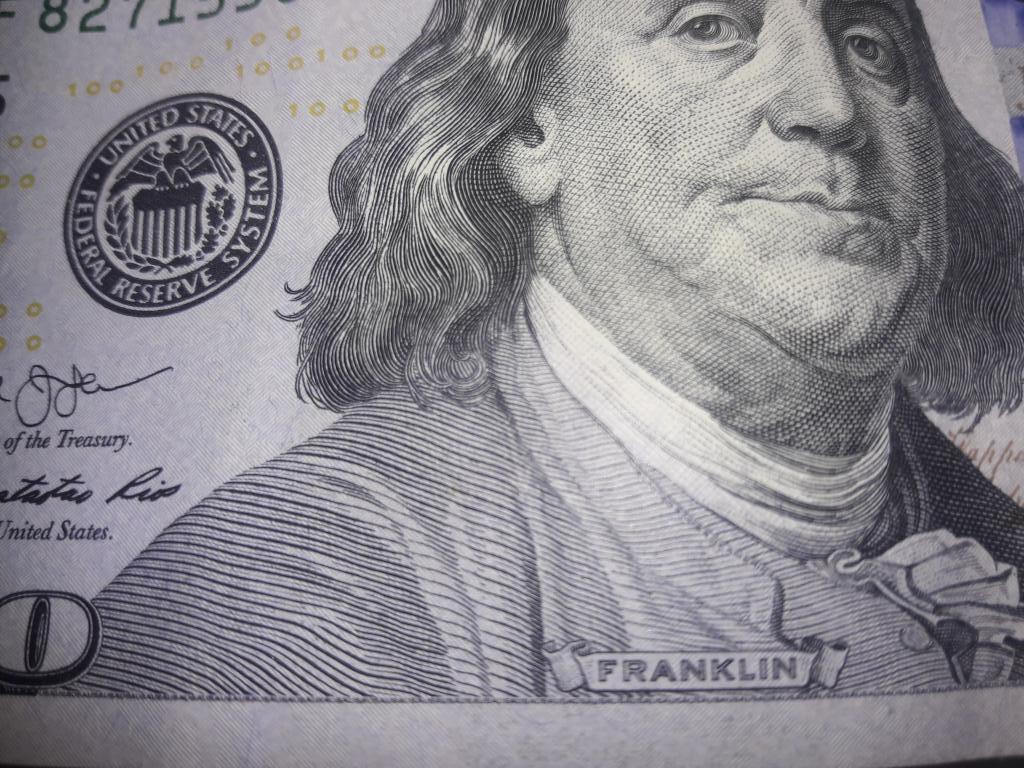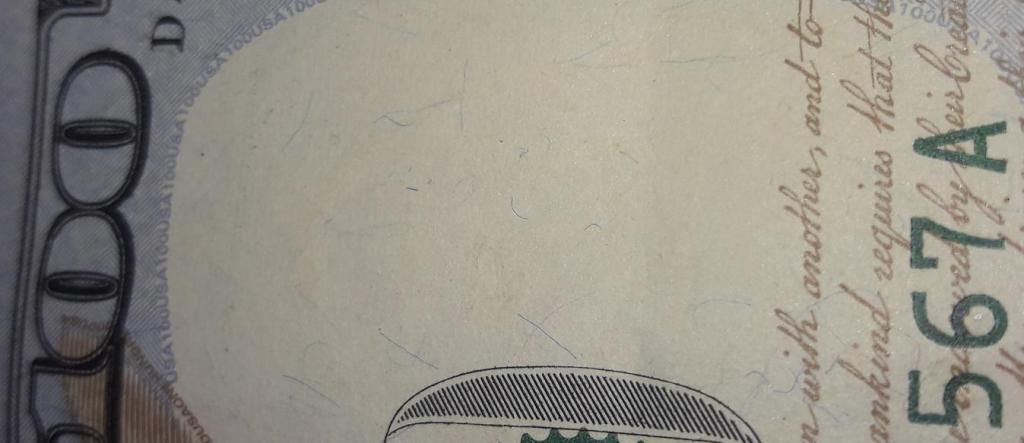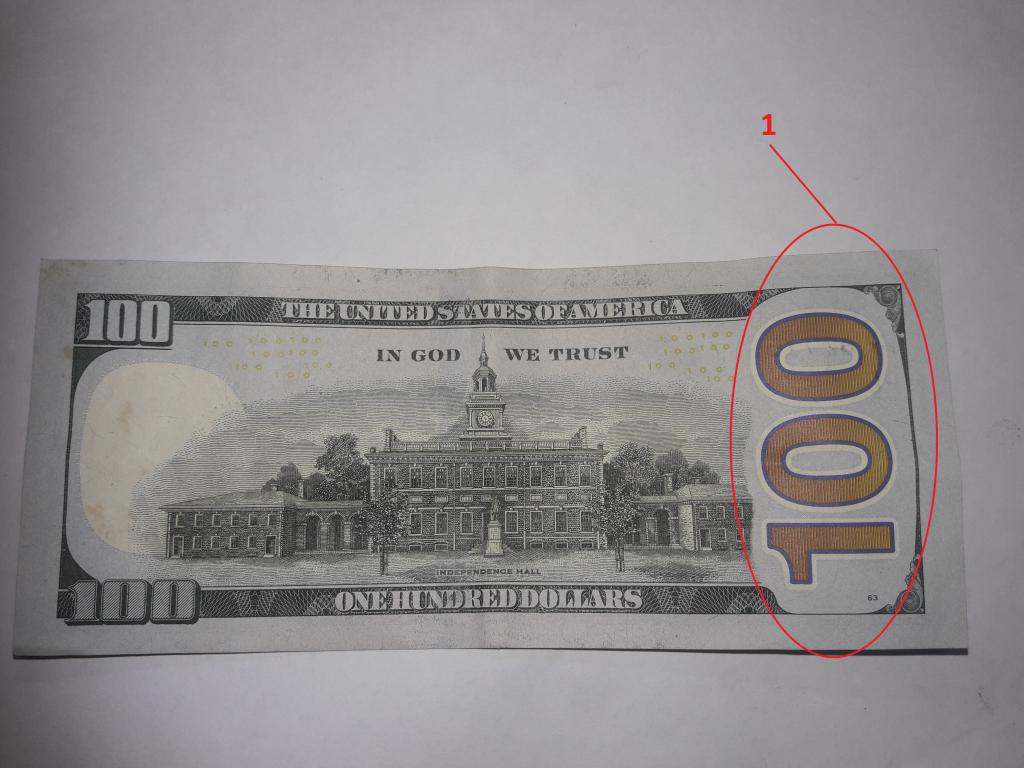Money changers, banks, trade - we meet all this very, very often. However, most operations take place in the national currency, and therefore many did not even see the dollar in the eye. But if nevertheless he fell into your hands? How to verify the authenticity of a 100 dollar bill? This question is not so easy to answer.
Bill paper

So that you clearly understand how you can check dollars for authenticity at home, you need to start with the simplest thing ... First of all, you need to pay attention to paper. Paper crunches very well. Moreover, the characteristic crunch of the dollar is inherent in both old bills and new ones. The paper from which dollars are made has a special composition. Due to its features, the bill does not get wet, and also wrinkles poorly. To make a bill invalid, the dollar needs to be wrinkled about 5,000 times, which, of course, is unrealistic.
Portrait on a hundred dollar bill
This is what a hundred-dollar bill looks like. In the first photo, an old-style banknote.

Since 2013, a new version of the dollar has come into use. It looks like a bill.

Probably everyone, young and old, knows that Franklin is depicted on a 100-dollar bill. Benjamin Franklin was one of the most influential politicians in the United States of America; his ideas form the basis of US policy. If you have never seen Benjamin Franklin in a history textbook, then you can make sure that it is him, thanks to the inscription located under the portrait of the politician.
Rough collar
Another option with which you can check $ 100 for authenticity is palpation of a bill. You can draw on the image of Benjamin Franklin with your fingers, namely on his collar or shoulder, and feel that in these places the bill is ribbed. The photo below shows exactly where the ribbed surface is.

In addition to the collar of Benjamin Franklin, there are many corrugated objects on the hundred-dollar bill. These include:
- the inscription "100" in the lower right corner, this inscription is greenish in color;
- the inscription "United States of America", which is located in the upper right corner.
All these tactile properties are inherent in both old and new bills. This was done so that even a blind person could easily identify the authenticity of the bill, as well as its face value.
Water signs
The main sign that the 100-dollar bill is truly genuine is the president’s watermark. The same Benjamin Franklin is located on the right of the bill in the form of a watermark. This element is both on old notes, and on new. If you look at the old 100-dollar bill, in the light you can see a thin strip on which the inscription "100 dollars" is printed, in the original it looks like: "100 USD".
This strip is also present on the new bill, in addition to it, there is also a blue strip, it is also a hologram. This iridescent bright blue stripe is a hallmark of the new hundred-dollar bills.
Colored hairs
These elements are also components of the bill security. If you saw dollars at least once in your life, then you saw that on the paper itself there are such defective specific villi. So, these villi are not at all defective, but rather. Thanks to these villi, placing the bill in a special ultraviolet apparatus, you can distinguish the authenticity of the banknote. These villi have an ultraviolet sensitivity, thus, under the influence of ultraviolet light they shine. These hairs are visible in the photo below, it is worth noting that the color of these villi is different: from blue to red.

Thanks to these villi, you can provide maximum protection for the US currency. The whole point is that it is only these villi that shine, nothing more. If counterfeiters want to counterfeit the bill, they cannot apply UV ultraviolet, such a bill will be highlighted in the machine.
Variegation of colors
The Federal Reserve Service took care of special paints for the currency. How to check dollars for authenticity thanks to these paints? All colored elements of the dollar, at the moment we are talking about a new bill, shimmer. These structures include:
- the number 100 on the back of the bill (in the photo the structure is indicated by number 1);

- on the front side of the bill, the number 100, located in the lower right corner (in the photo the structure is indicated by number 2);
- the bell sign located on the front side of the bill, near the bottom edge (in the photo the structure is indicated by number 3).

The photo above shows all these structures on the front side of the banknote.
Letters and numbers on a bill
Few people know how to check dollars for authenticity, having only the alphabet with them. A distinctive feature of a dollar bill is a set of numbers and letters. These are symbols located in the upper left corner, on the front side of the banknote. In more detail with their location, you can see the photo. What does the number mean and what does the letter mean?

The letter means the letter of the English alphabet, and the figure shows the serial number of this letter in the English alphabet. Very often counterfeiters do not even pay attention to this when counterfeiting notes, the letter and number must correspond to each other. To identify the banknote in this way, you only need the English alphabet and the ability to count the letters strictly in alphabetical order.
Differences between new and old banknotes
The differences between the new and the old banknote are significant. For example, the difference in the thickness of the banknote. Old bills are somewhat thicker. For example, a pack consisting of 100 dollars banknotes in the amount of 100 pieces of the old sample will differ by a centimeter from the same pack of the new sample.
The image of Benjamin Franklin on the new bill is much larger, in addition, a close-portrait ring has been removed.
It is also worth noting that the new bill is more durable.
Hologram strip
The next way to check dollars for authenticity is a hologram. This innovation is inherent only in new bills. This strip was already mentioned in the article, but now I would like to talk about it in more detail.

Firstly, this strip is made in 3D design.
The number 100 is traced on it, which indicates the face value of the banknote. But that's not all! This strip is transparent, which makes it possible to consider the background of the bill. For the blind, this hologram strip is also useful, since it has a ribbed surface, this gives it tactile properties.
How to check 50 dollars for authenticity?
In addition to $ 100, a banknote of 50 is in great demand. How to check such a bill? The thing is that all dollars, regardless of their face value, are similar. The villi highlighted under ultraviolet light are available in both $ 100 and $ 1. Also, all dollars, thanks to the special composition of the paper, have a specific crunch.
Conclusion
In conclusion, I would like to say that, as with any bill for authentication, the same rule always works. Rule of the three "P": look, touch, twist. I would like to wish you not to fall for the clever minds of counterfeiters and be extremely careful with currency transactions, because it all depends on you! And the federal reserve system of the United States of America, in turn, pretty much made sure that banknotes were impossible to counterfeit. Also, people with disabilities who were deprived of vision did not remain without attention; for them, the currency is equipped with tactile elements.
